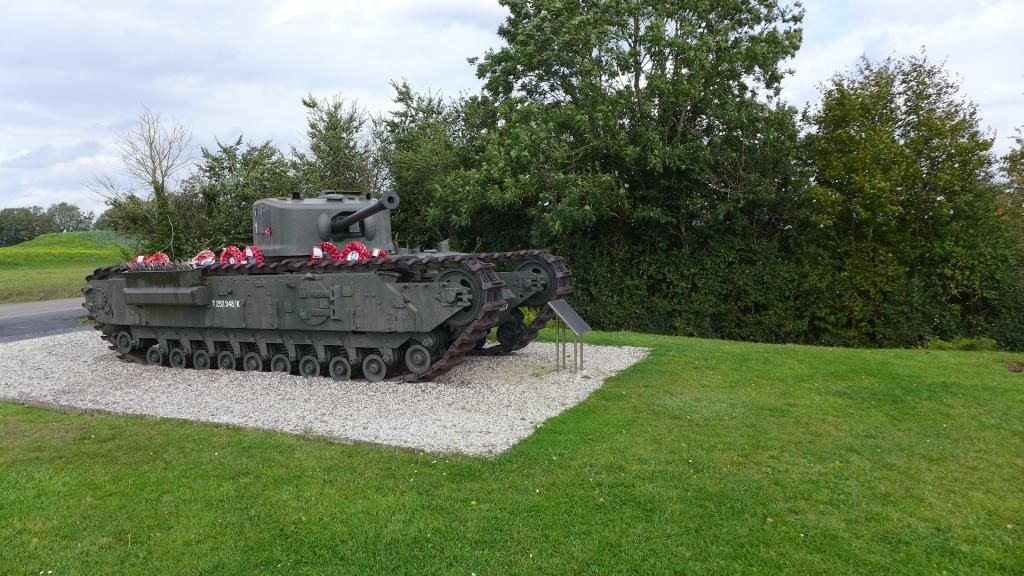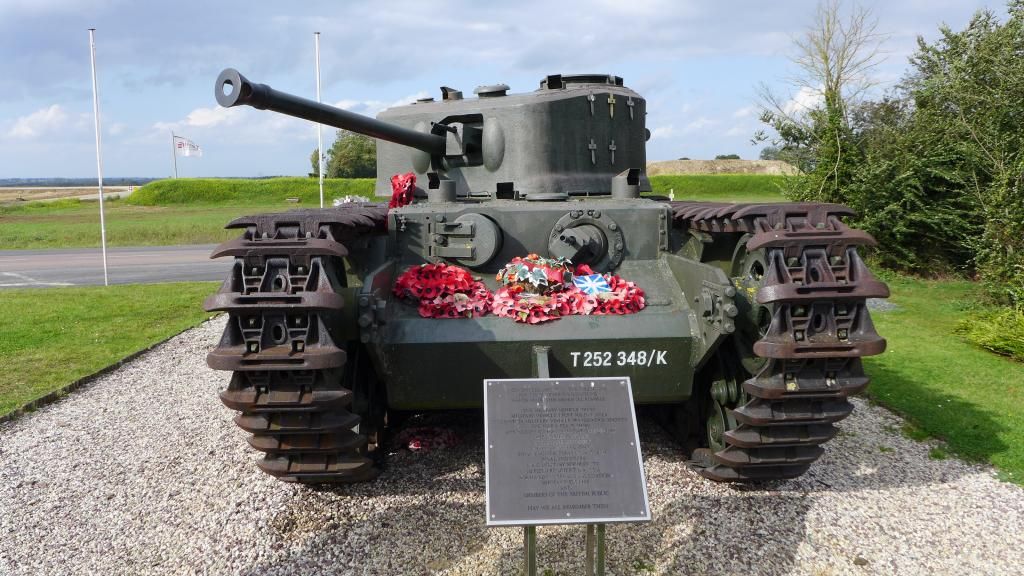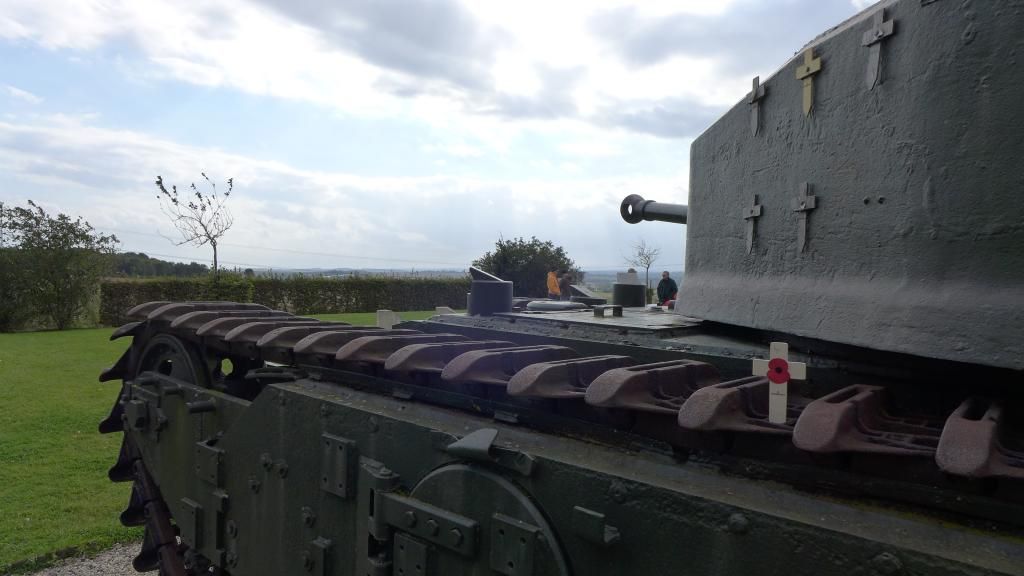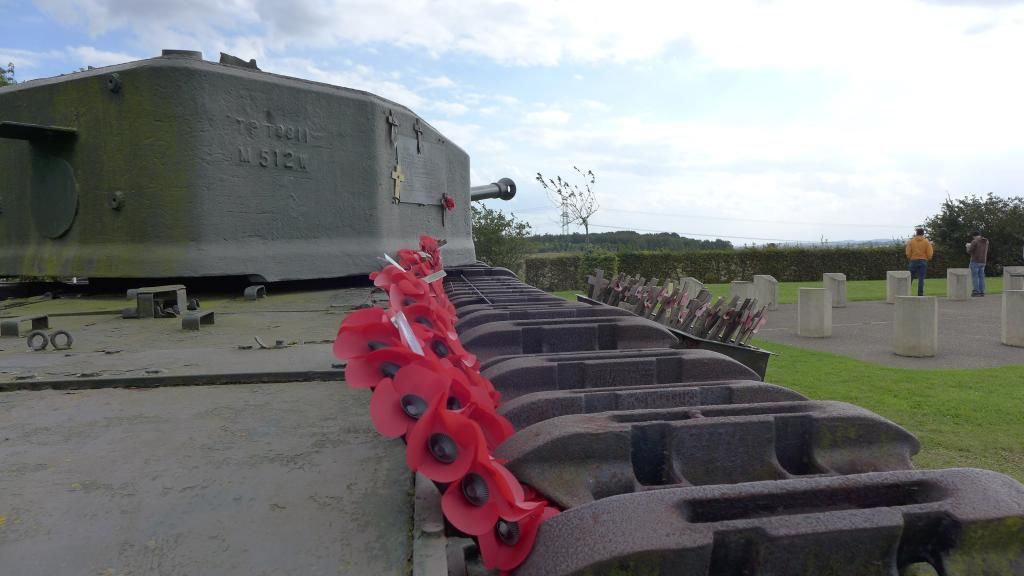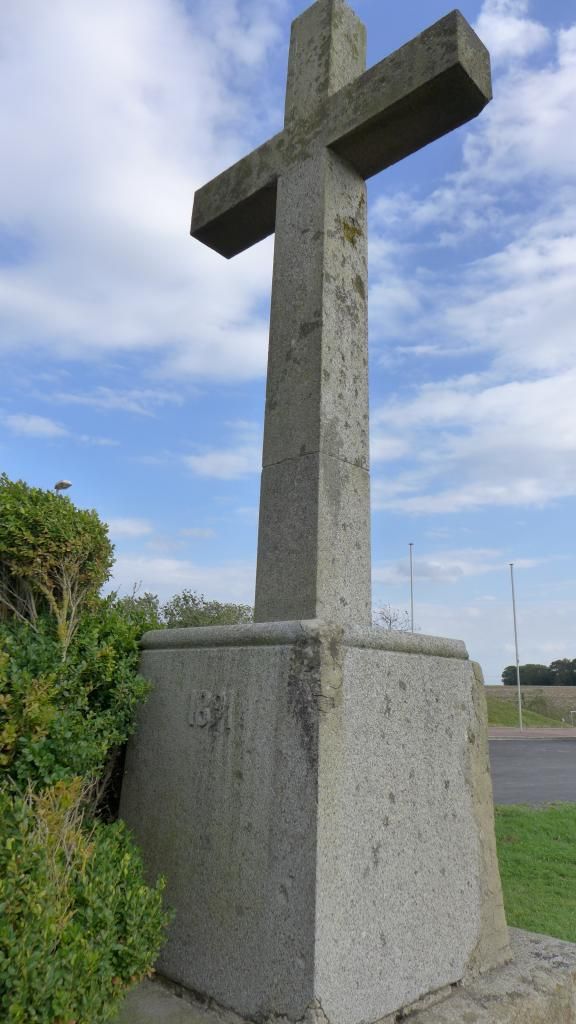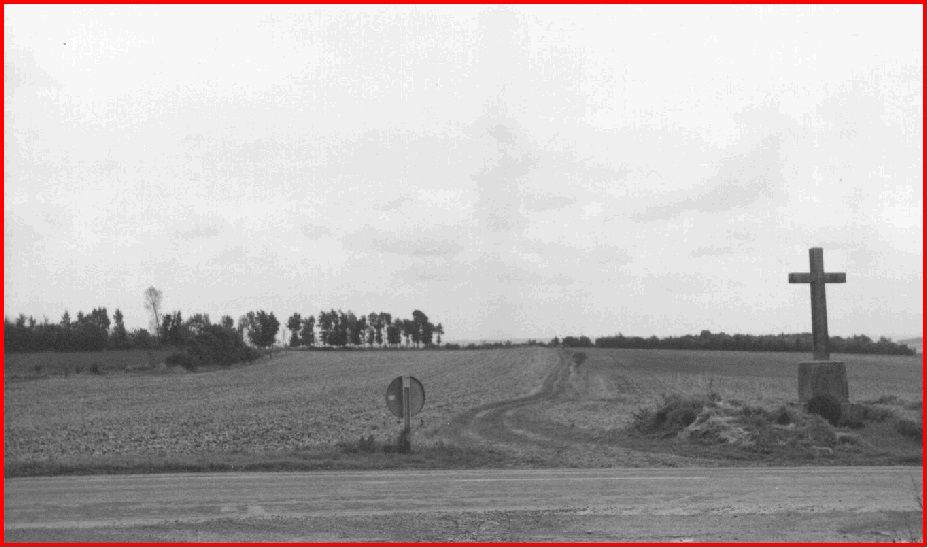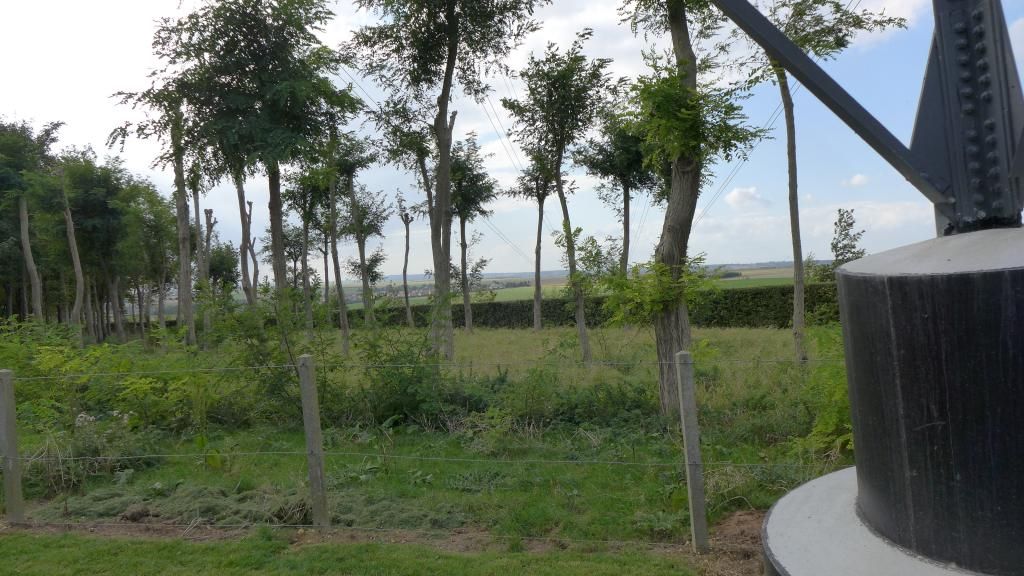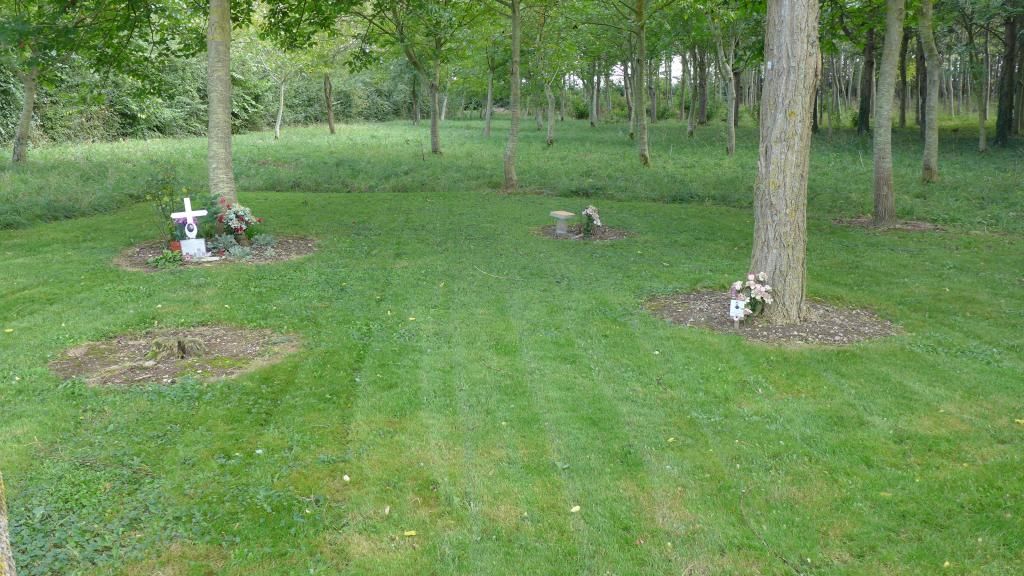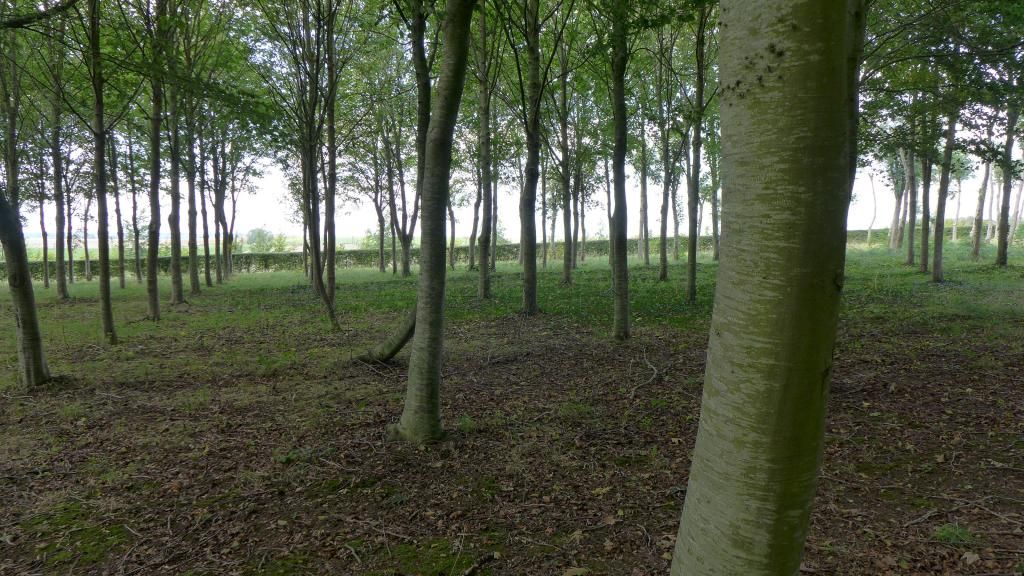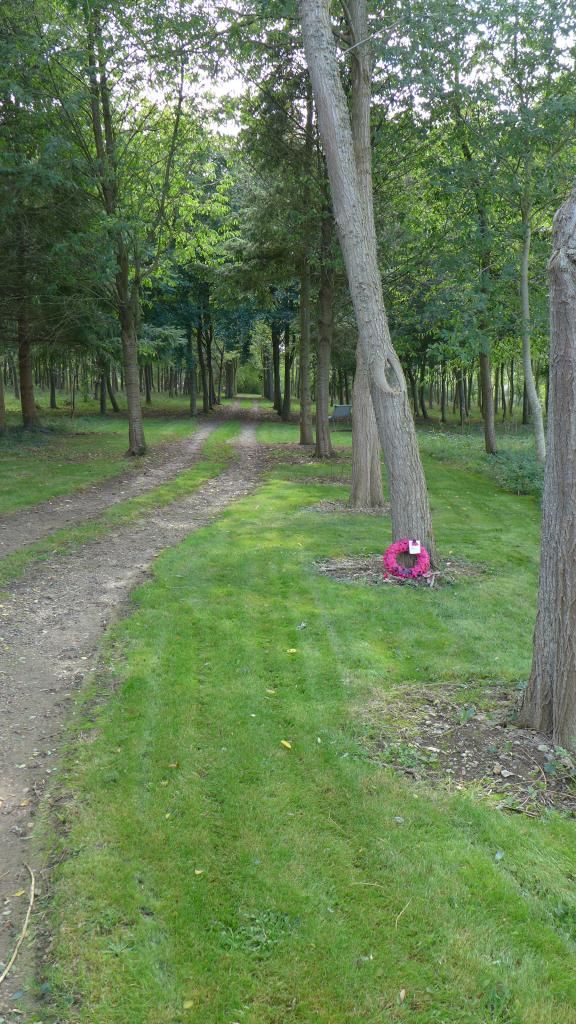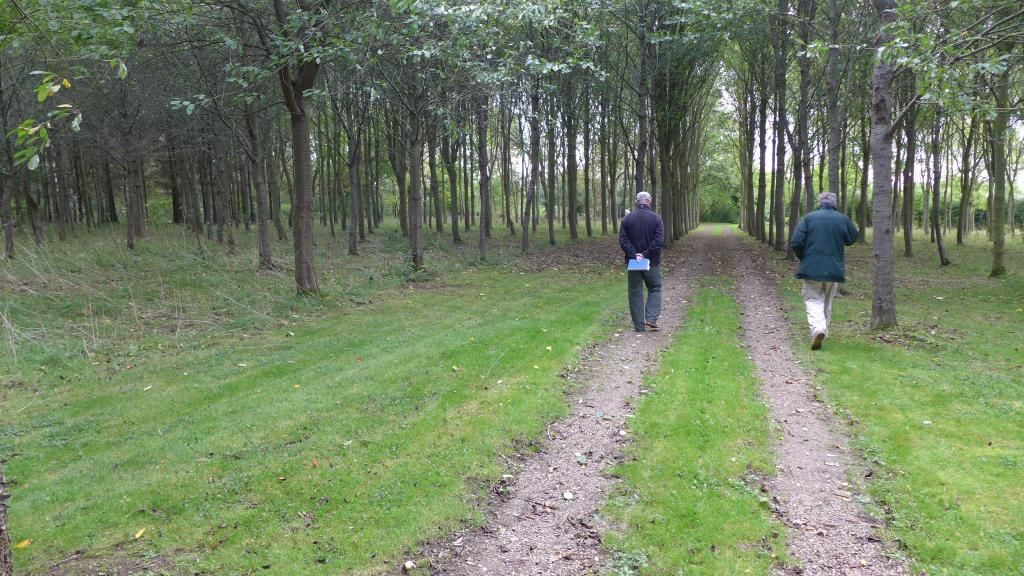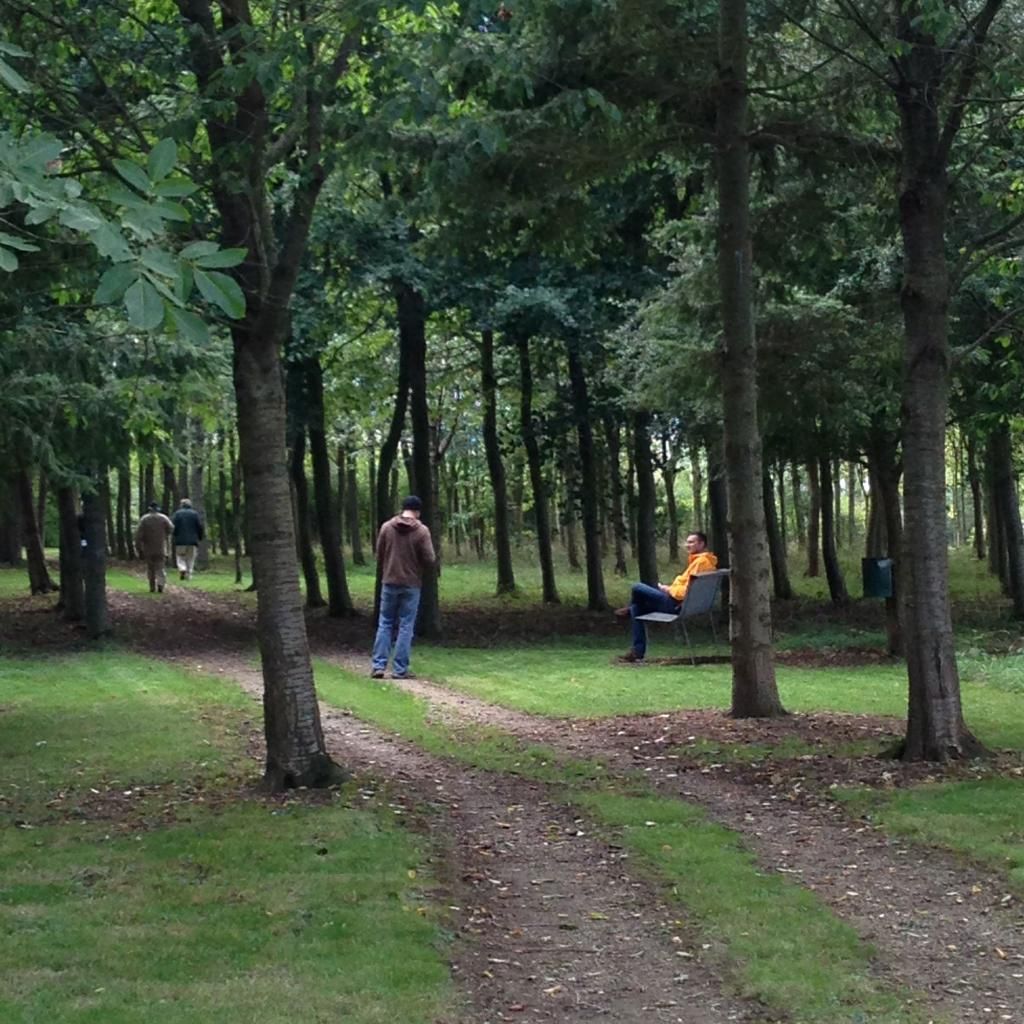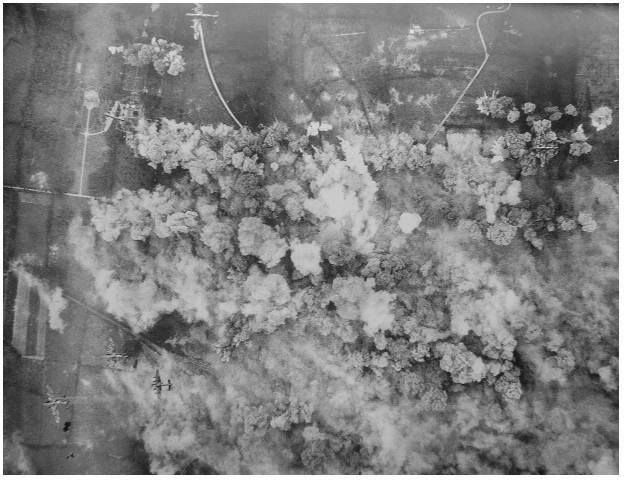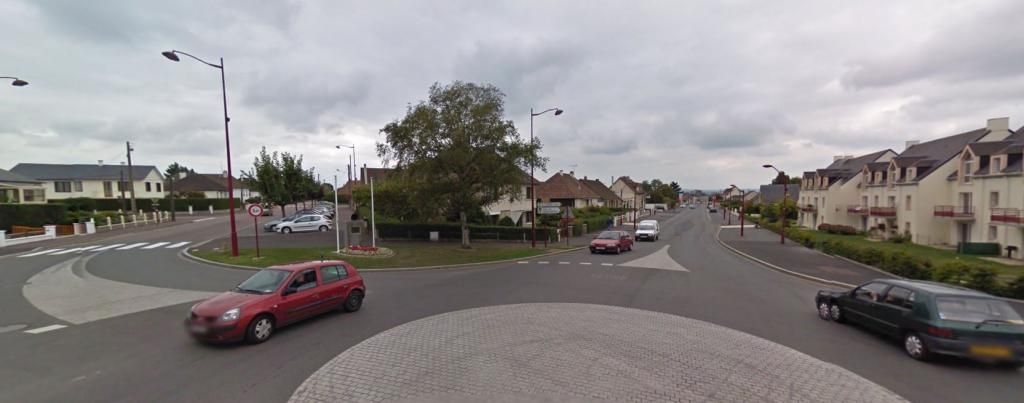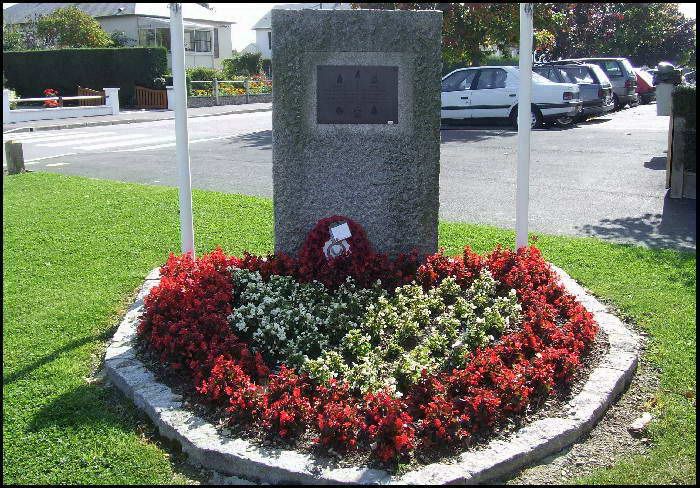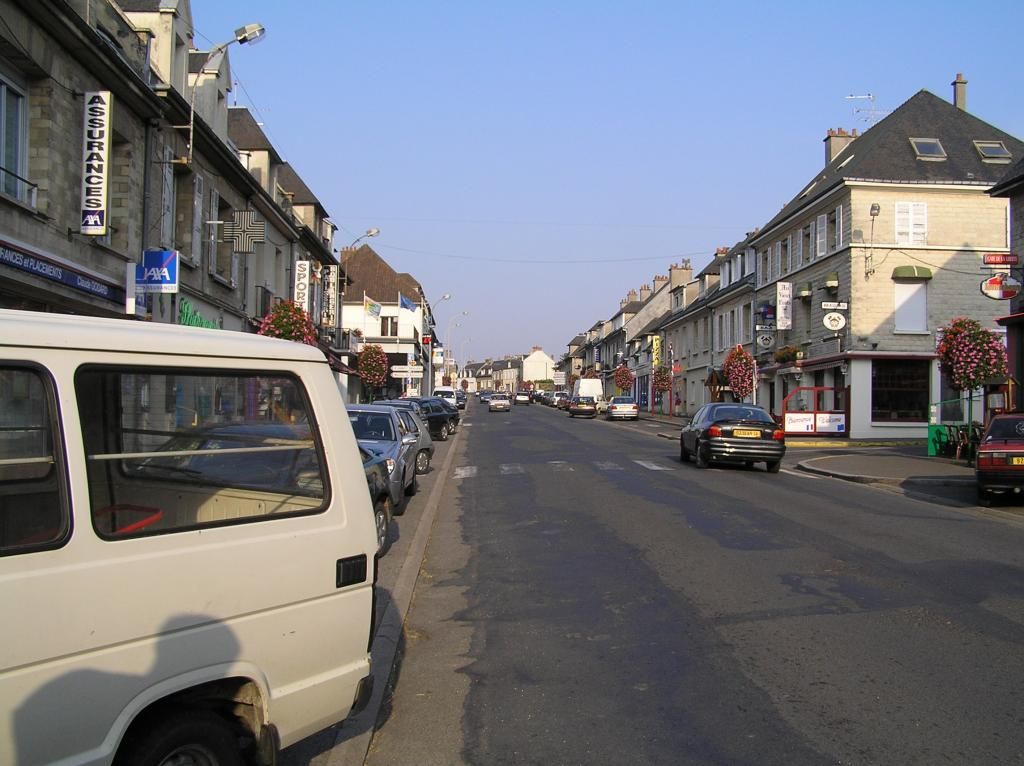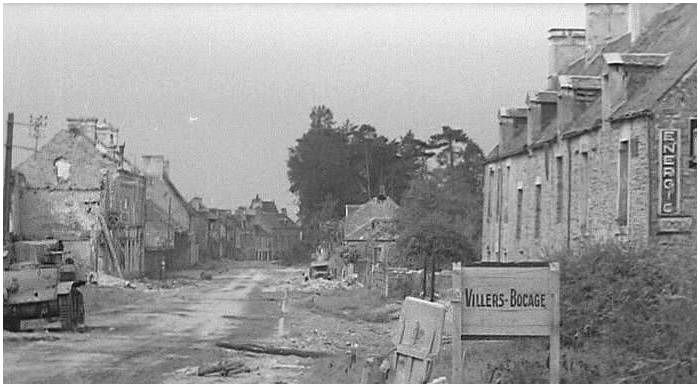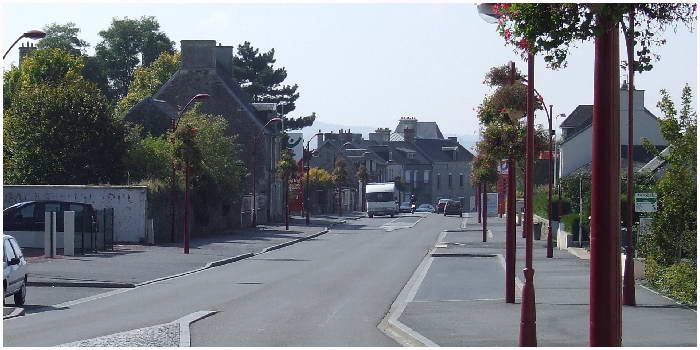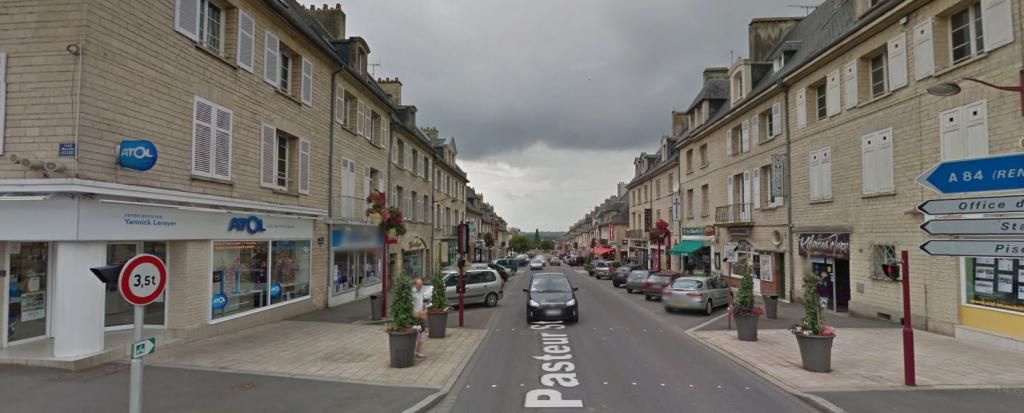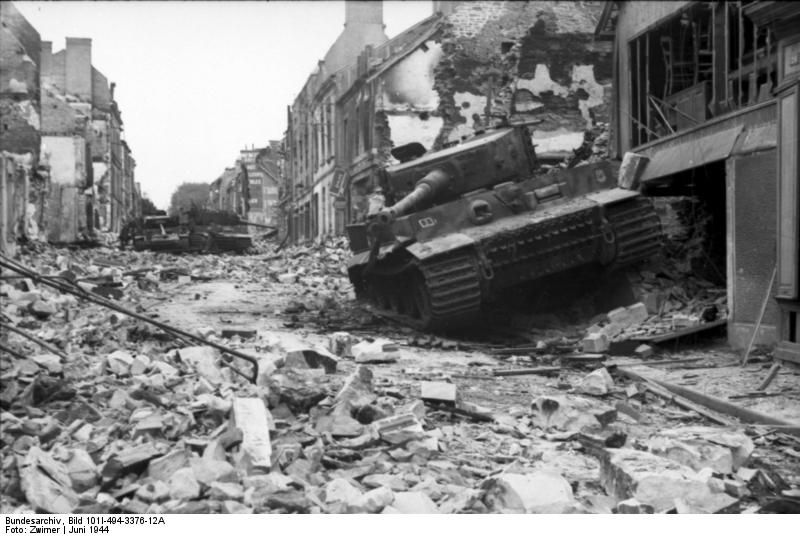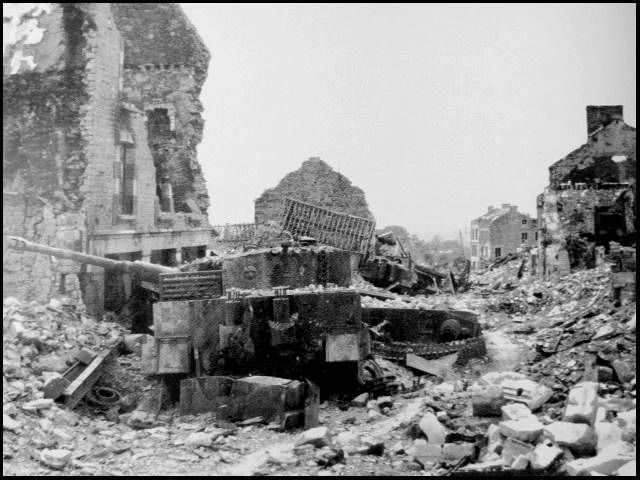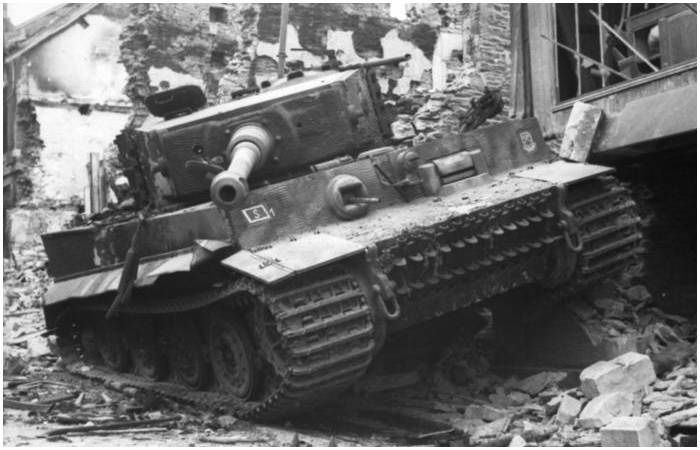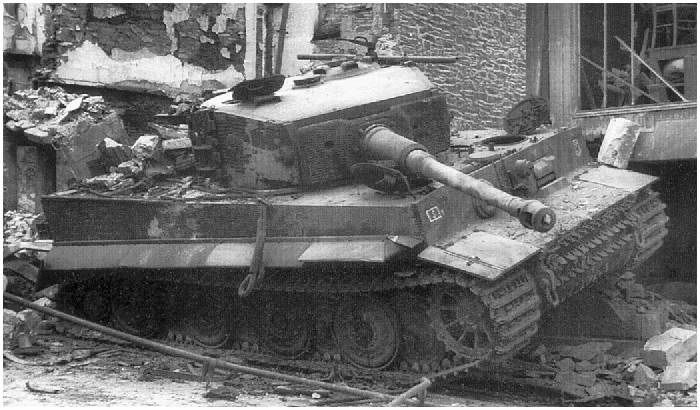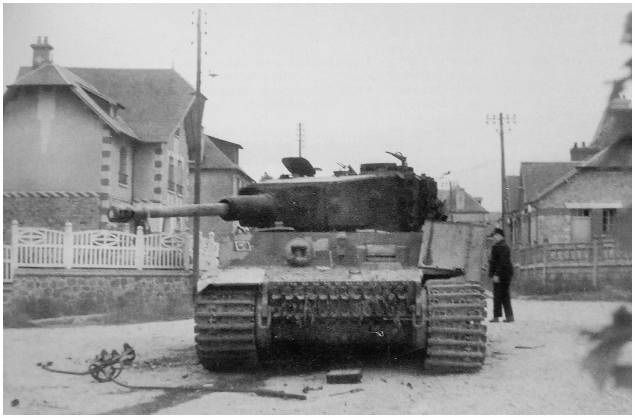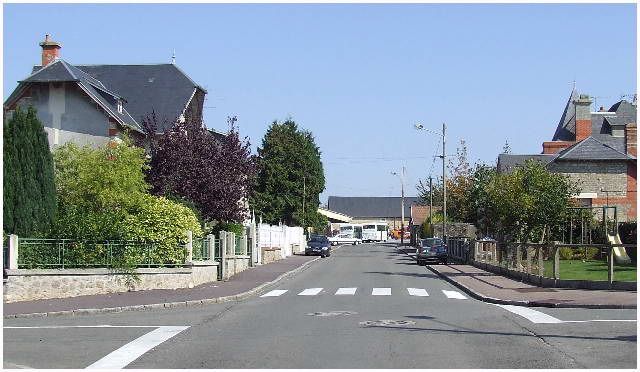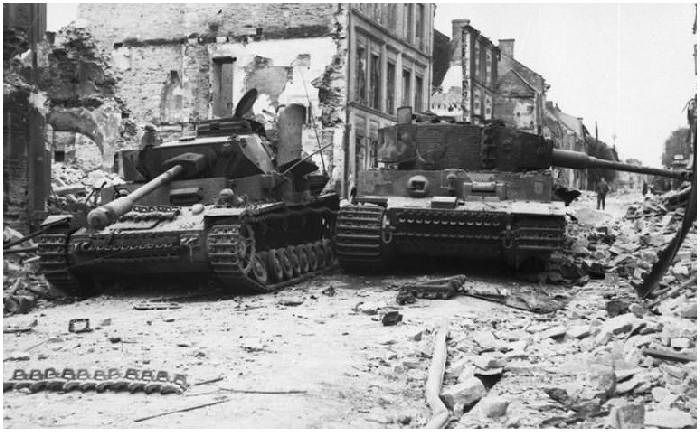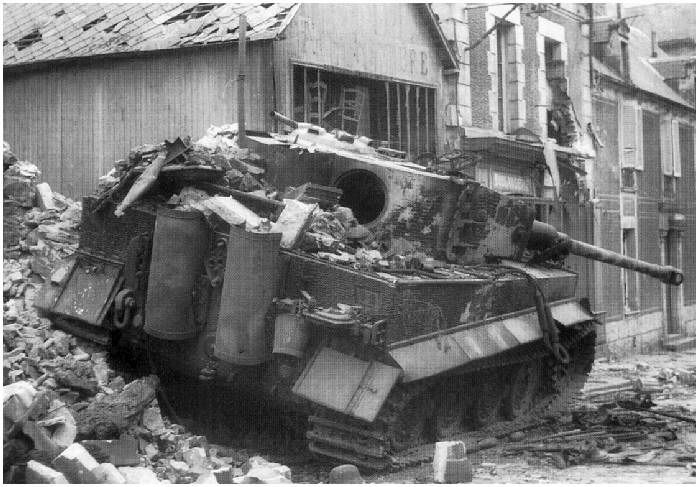On this day, after walking the many towns and battlefields, it was only proper to end it in a cemetery where we could put names to and could pay our respects to the fallen.
On our way back from Villers Bocage to our hotel in Bayeux we stopped at a little British cemetery in Tilly-sur-Seulles.
This cemetery is uniqe in that it has German graves also.
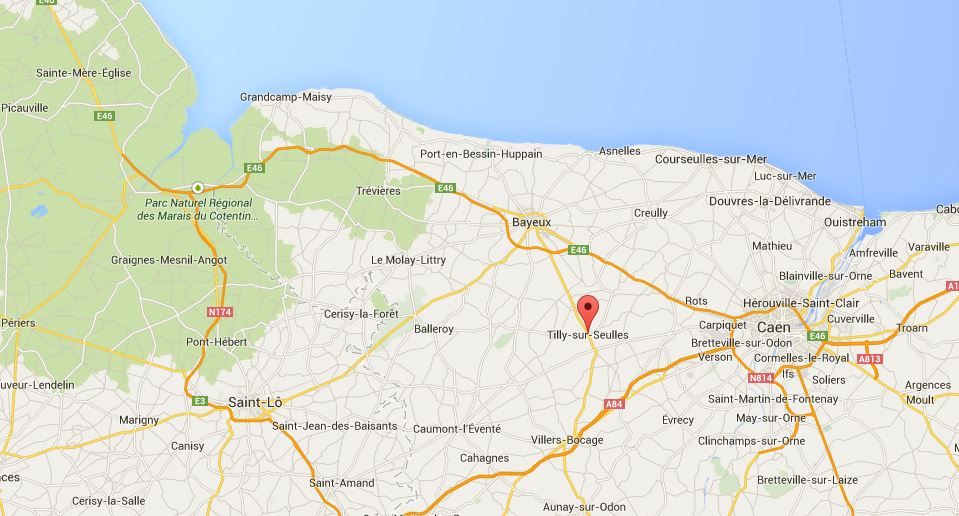
(The Germans are buried in the upper right)
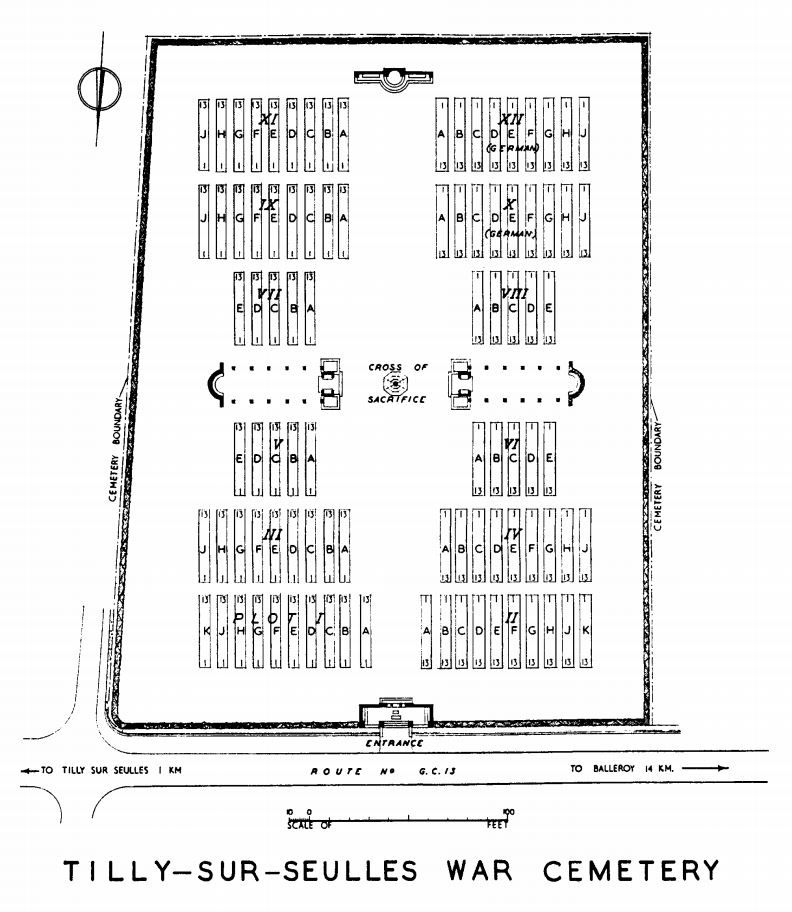
TILLY-SUR-SEULLES war cemetery lies south of Bayeux and contains the graves of 1,222 men, 986 British soldiers, 2 New Zealanders, 1 Canadian, 1 Australian and 232 Germans, who died as British forces fought to move south to encircle the German army in Caen.
There was heavy and fluctuating fighting in the vicinity of Tilly-sur-Seulles immediately after the landings involving chiefly the 49th and 50th Divisions. Tilly itself was not captured until 18 June and fighting continued nearby until mid July.
A noticeable difference between American/Canadian/German and Polish cemeteries is the headstones.
The British were the only ones who allowed family members to add an inscription.
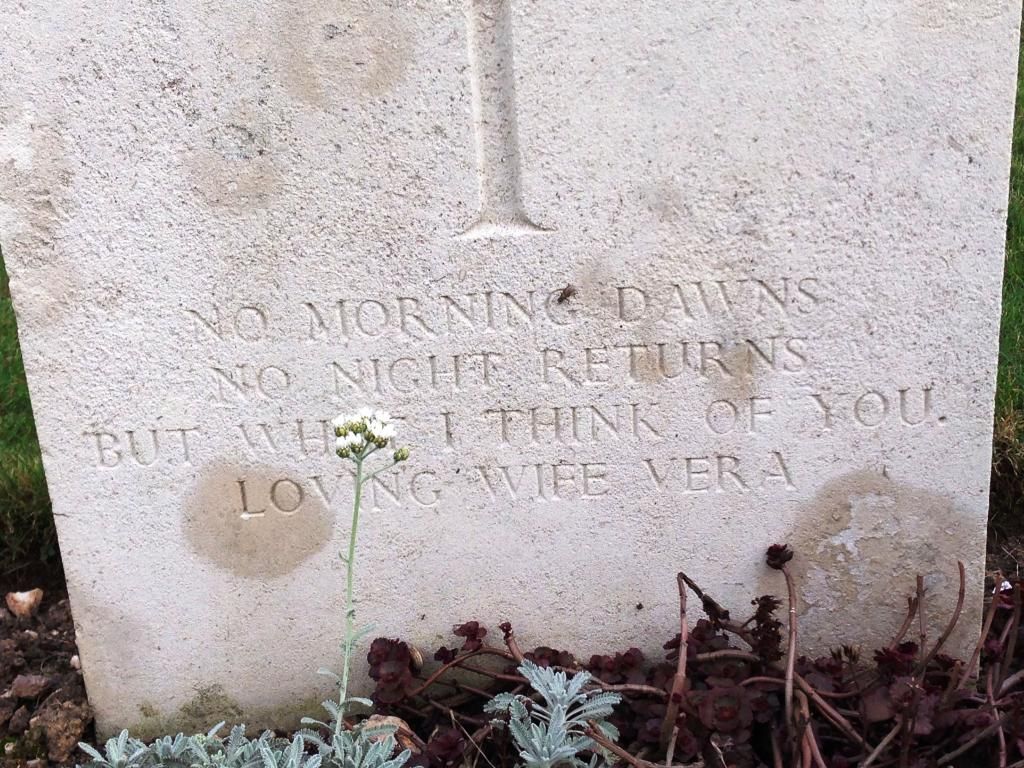
Among the headstones is a Pte N. Lerner of the Dorsetshire Regiment who was killed 22 days after D-Day at the age of 29 and who is notable only because of the unusual character of the text chosen by his family to be carved at the base of his headstone: 'Fell Fighting Fascism from Cable St to Normandy. Marie, Frank and Natalie.'
This single inscription in a cemetery perhaps conveys better than a host of museums and monuments the essential purpose of the massive, elaborate and bloody military operation which was the Allied invasion of Normandy.
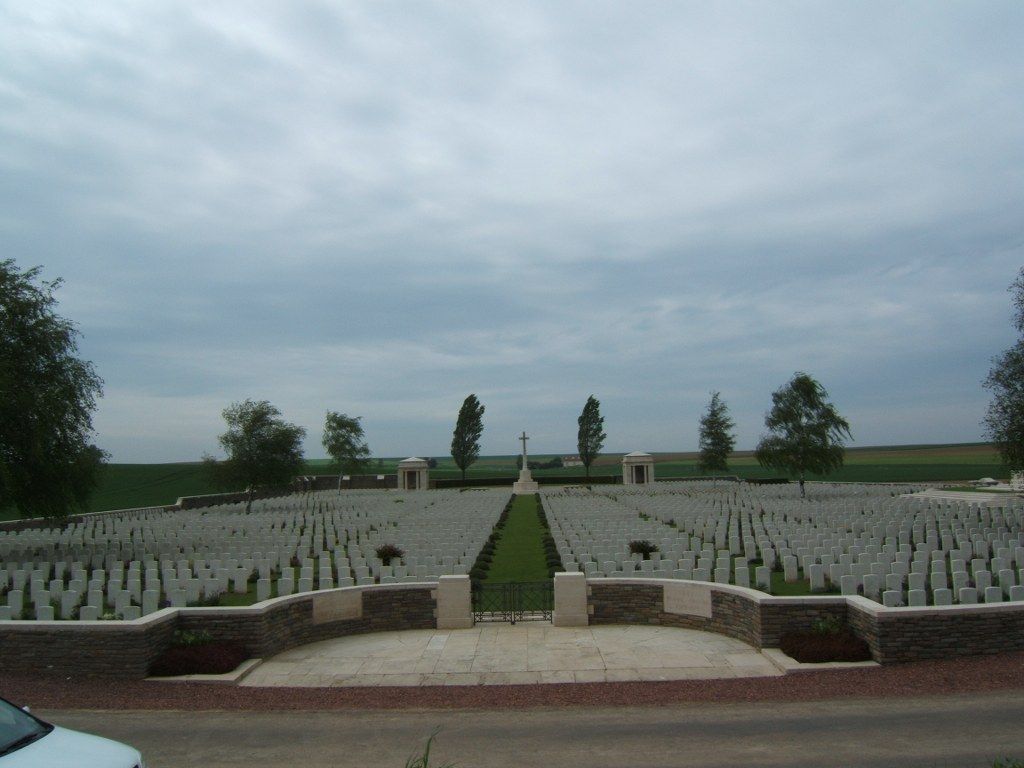
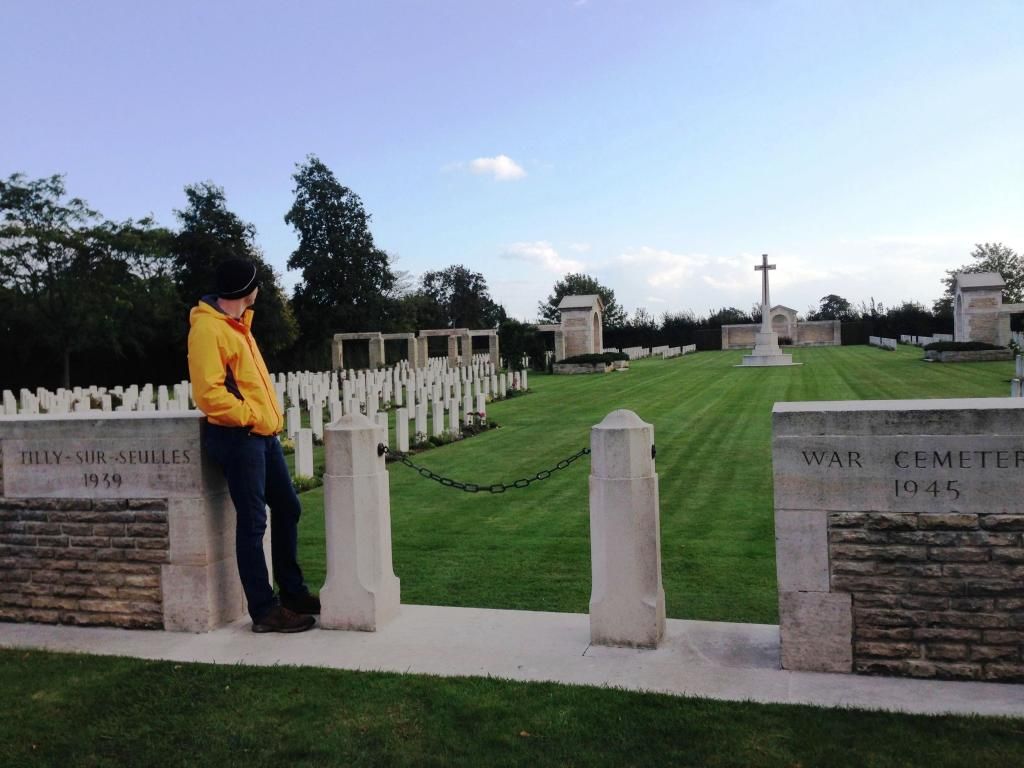
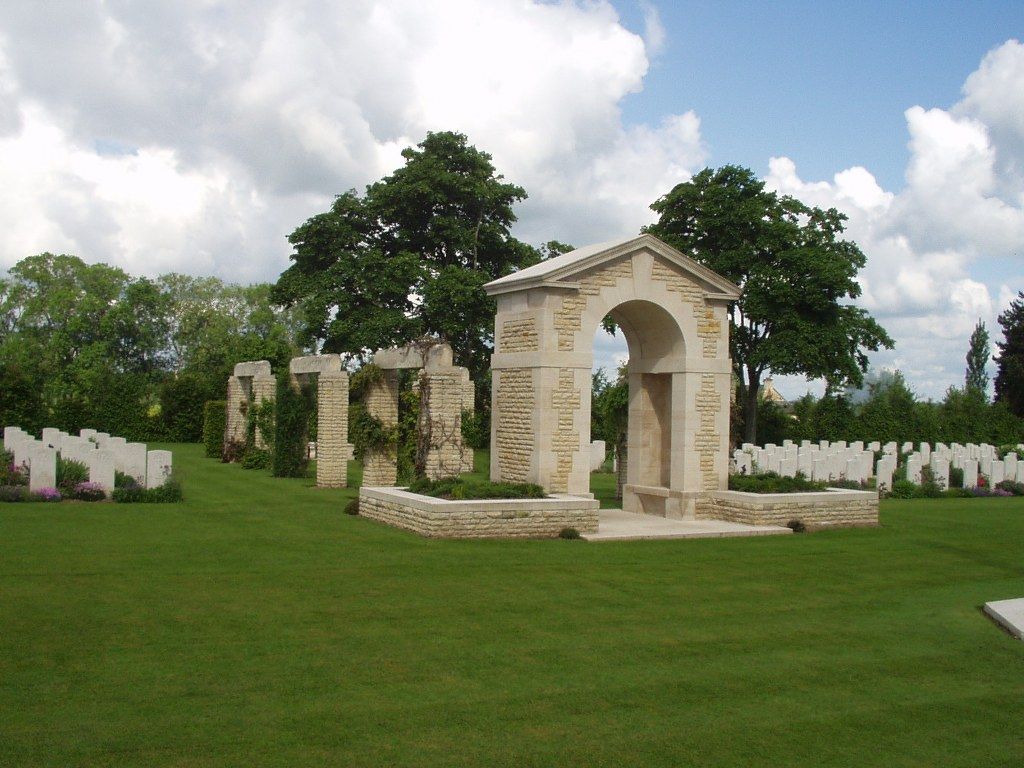
I don't want to bore you with headstone after headstone so I'll just post one showing the inscription on the bottom from the families of the fallen.
Most of the graves here were from the Yorkshire Regiment , the Green Howards.
We had followed the Green Howards from D-Day through several of the battles we toured today.
But here also were buried other various units,such as this 25 year old of the Royal Army Medical Corps:
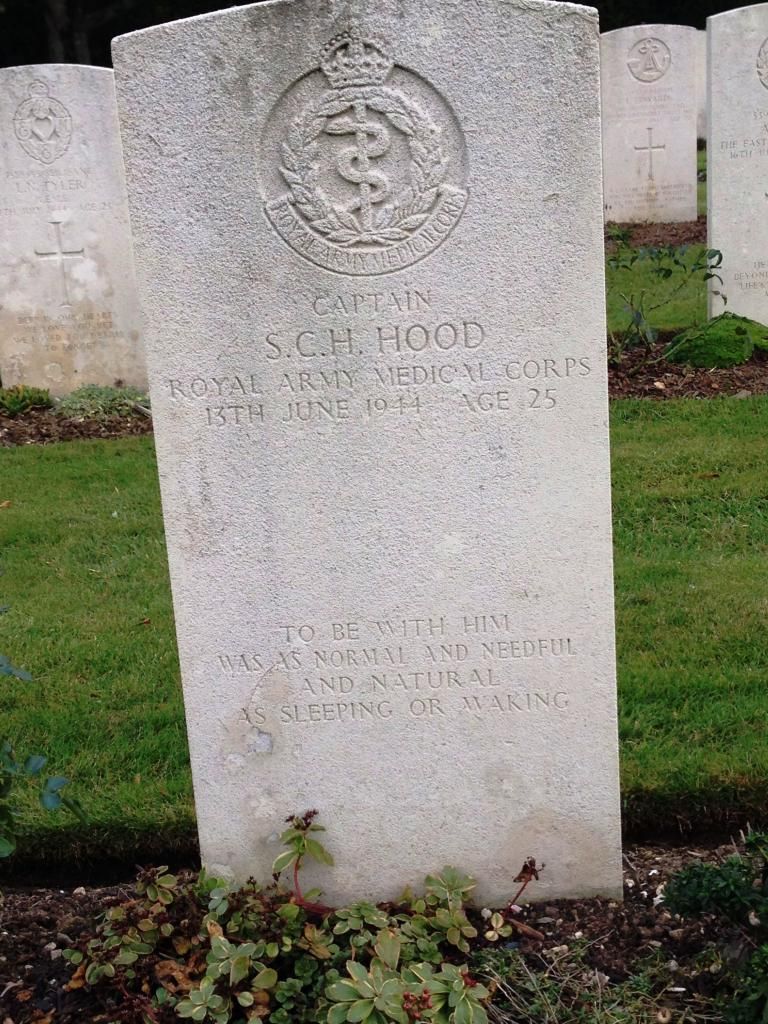
There were also a surprising number of RAF air crew.
Here is a story of a crew who were killed an a mission to bomb Villers Bocage.
(How many bombers can you count in this pic of the bombing of Villers Bocage - I count 6)
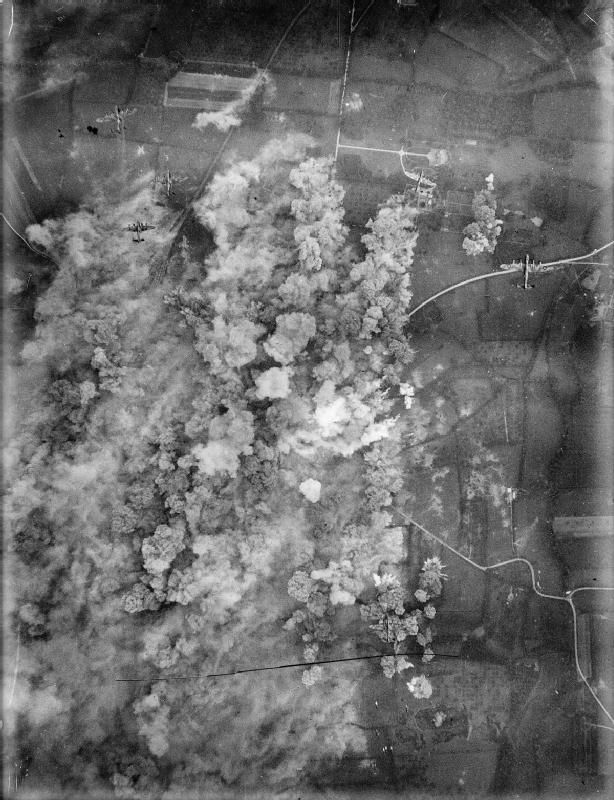
Archive Report: Allied Forces
Compiled from official National Archive and Service sources, contemporary press reports, personal logbooks, diaries and correspondence, reference books, other sources, and interviews.
Mission: Villers-Bocage
Date: 30th June 1944 (Friday)
Unit: No. 51 Squadron
Type: Halifax III
Serial: LV782
Code: MH-T
Base: R.A.F. Snaith, Yorkshire
Location: Caan, France
Pilot: Fl/Sgt. John Robert Alfred Cooke (Bob) 1336866 R.A.F.V.R. Age 21. Killed
Fl/Eng: Sgt. Harry Perkins (Perks) 1181759 R.A.F.V.R. Age 24. Killed
Nav: F/O. Tony Negrich J/22062 R.C.A.F. Age 22. Killed
Air/Bmr: W/O. II Wendell Clifford Waye R/154885 R.C.A.F. Age 21. Killed
W/Op/Air/Gnr: Sgt. Harry Barron 15565406 R.A.F.V.R. Age 23. Killed
Air/Gnr: Sgt. Alfred Edgar Jukes 1583474 R.A.F.V.R. Age 21. Killed
Air/Gnr: Sgt. Charles Martin Allen 1385431 R.A.F.V.R. Age 26. Killed
REASON FOR LOSS:
The crew that flew T ‘Tommy’ on this operation had arrived at RAF Snaith at the beginning of May 1944, becoming one of the crews of C Flight, 51 Sqn.
Their first operation was to bomb Morsalines, France on 9th May in MH-S “Sugarâ€. This was the first of 18 successful operations against transport targets and V1 sites in France and Belgium during May and June.
Their 19th mission, from which they did not return, was a daylight bombing operation.
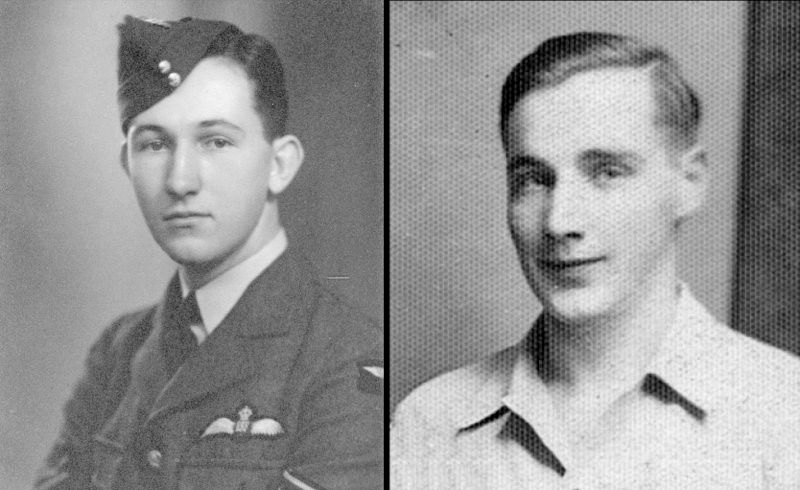
Above left: Fl/Sgt Cooke, right: F/O. Negrich
In the early evening of 30th June 1944, flying this time in MH-T, they took off from Pollington, South Yorkshire at 18.00 hrs, with the rest of 51 Sqn to join the force of 266 heavy bombers attacking a large formation of enemy armour at Villers Bocage.
This key target, south west of Caen, Normandy, was a Panzer Corps that had been assembled to counter-attack the Allies’ invading forces the following morning. It was essential therefore to attack them that evening.
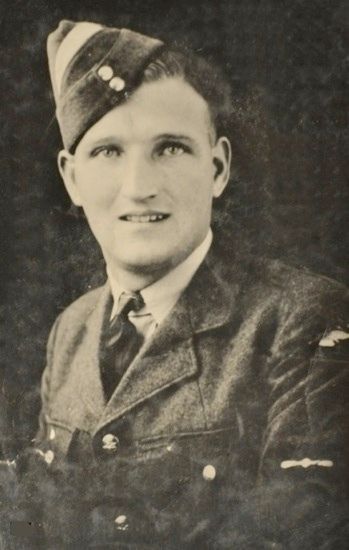
Sgt. Harry Perkins (Perks) (Courtesy James Seymour)
The master bomber, a Lancaster LL620 JI-T from 514 Squadron flown by F/O. Douglas A. Woods R.A.A.F. ordered the bombers to reduce height because of cloud cover over the target,from 12,000 to 4,000 feet.
Only a small number of aircraft at the end of the bomber stream including T ‘Tommy’ were able to do so, the order being received too late for all the others.
5 aircraft (‘C’ flight, 51 Sqn.) made a steep dive to this very low height. In doing so they speeded up and caught up those above them.
They were then vulnerable to both to flak and to bombs falling from the mass of aircraft above them.

Above left: Sgt. Barron, right: W/O. II Waye
Speaking in 1996, eye witness Eric Millett, who had been flying in MH-S – another of the low flying aircraft – recounted how he had seen the wing of T ‘Tommy’ “fold up†from the wing root. This was just after he had seen the Master Bomber’s Lancaster blow up. He remembered also hearing a bomb scrape the fuselage of S-Sugar, suggesting that it was more than possible that a bomb had hit T-“Tommy†from above and that a similar fate had almost befallen him and his crew.
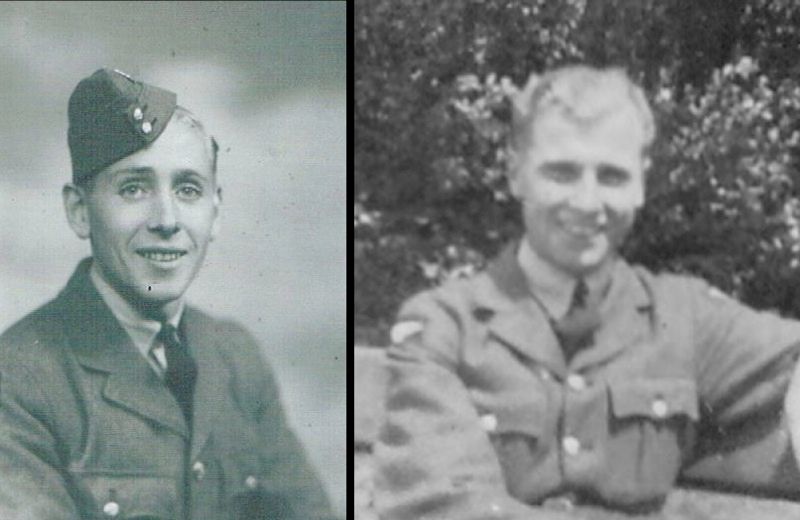
Above left: Sgt. Allen, right: Sgt Jukes
He remembered this operation so clearly after more than 50 years because about a minute later anti-aircraft fire blew away the front 6ft of the nose of his aircraft. Flt. Lt. Jim Feaver, the pilot of S ‘Sugar’ nursed his damaged aircraft home, for which he was awarded the DFC; however MH-T crashed onto farmland between Cahagne and Le Quesnay, Calvados, on the farm of Monsieur Alain Aubrée.
All the crew members were posted missing and it was not until the 13th September that news from the RAF Liaison Officer HQ Second Army confirmed that their temporary graves had been found at map reference 740580 or 739580. This area had changed hands in the fighting no less than five times during the Normandy campaign before finally being taken by the Americans.
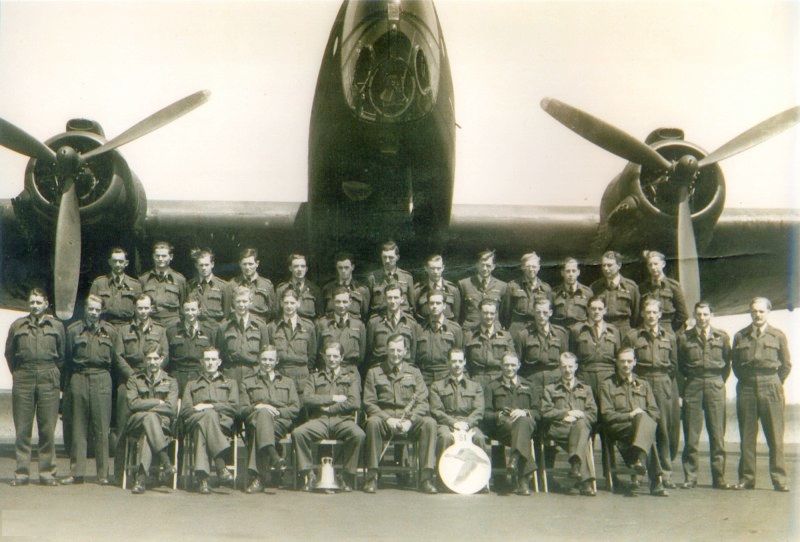
51 Squadron pilots with Fl/Sgt Cooke behind the commanding officer. Taken in June 1944
The operation was considered very successful and bombing classed as very accurate. 1,100 tons were dropped and the German attack failed to take place.
In total 3 aircraft were lost on this operation, the two described and also another Lancaster from 514 Squadron which is understood to have collided with a 15 Squadron Lancaster PB178 JI-P piloted by P/O. Jack E.K. Hannesson R.C.A.F. killed with 4 other crew members and a further 2 injured after it crashed at Pittsam Farm, near Midhurst, Sussex. The other aircraft returned safely. A 75 Squadron Lancaster, LL942 exploded in an accident on the ground after bombing up - no injuries reported.
The crew were initially buried near the crash site at Cahagnes, but later exhumed to various cemeteries on the 14th June 1945.
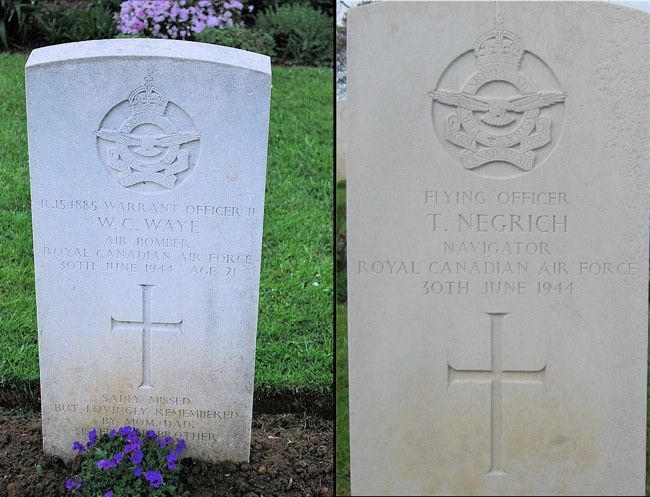
God rest all their souls.

This ended Day 5.
Tomorrow would be our last day and what better way then to tour the Battle of the Falaise Pocket and the end of the battle for Normandy.
